This week we traveled to Death Valley National Park, about 7 hours by automobile from the Phoenix area. Death Valley is located in California, along its border with Nevada, two hours northwest of Las Vegas. First discovered by non-natives in 1849, the area was designated a National Monument in 1933 and then a National Park in 1994. It is the largest national park in the contiguous United States, covering an area of 3000 square miles, making it larger than the states of Delaware and Rhode Island.
Death Valley is part of the Mojave Desert and it has a surprisingly diverse geography. In the the two days we visited, we barely scratched the surface of what there is to be seen. Today, I’m posting some photos of our experience in an area called Badwater, located in the southern end of the park on the floor of the Death Valley Basin.
This first photograph was taken from a lookout called Dante’s View, located above Badwater in the Amargosa Range at an elevation of 5475 feet above sea level. It shows the valley looking northward. Death Valley lies between two mountain ranges, the Amargosa Range on its east side and the Panamint Range on its west. The valley is about 5 miles wide at this point.
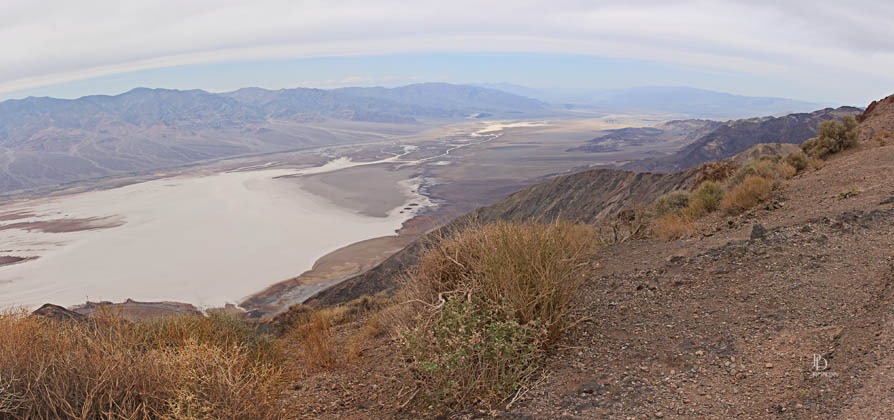
The Death Valley Basin is one of the lowest places on earth and the lowest in North America. Its depth was created by movements of the lateral mountain ranges upward, creating forces that drive the basin downward. Over time, the basin has accumulated sediments washed down from these same ranges, but it continues to descend at a rate greater than it fills. The following photographs attest to the basin’s elevation of 282 ft (85.5 m) below sea level.
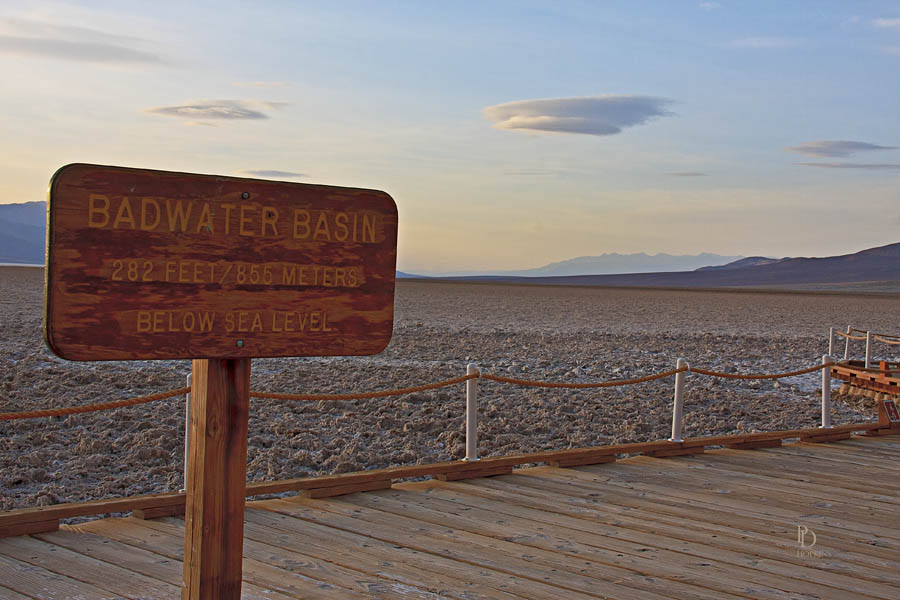
The shot above was taken looking north from a walkway built out onto the floor of the basin.
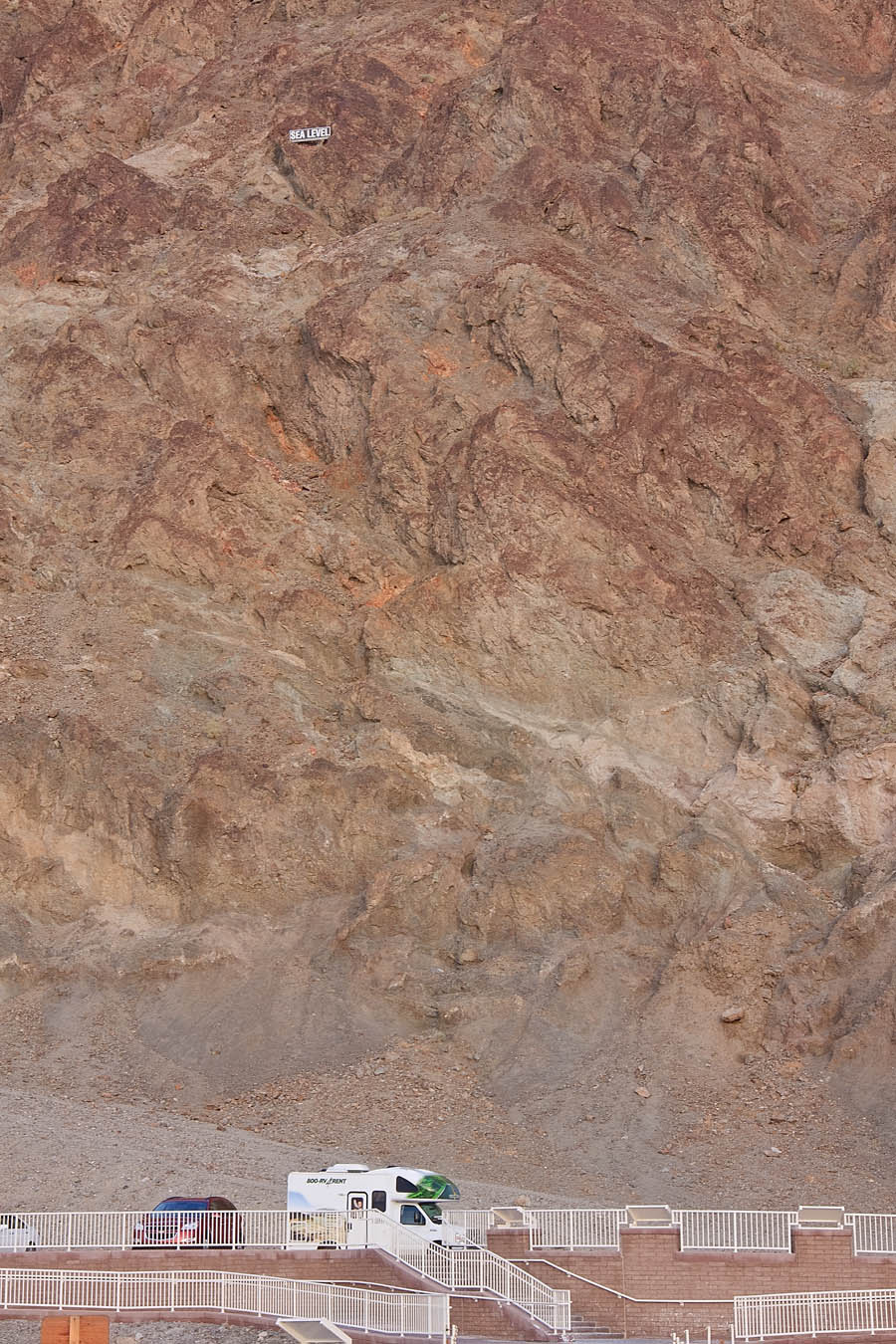
This scene adds a little perspective to the depth of the basin.
The next picture was taken from the boardwalk on the bottom of the basin, showing a close-up view of the salt deposits laid down on the basin’s floor.
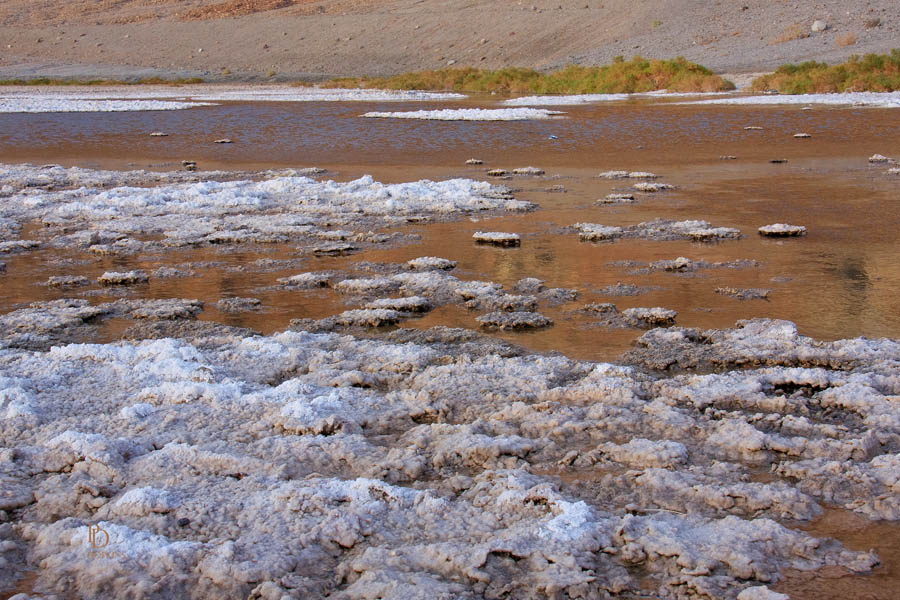
Among the many salts deposited here is sodium borate, a white powder consisting of soft colorless crystals that dissolve easily in water. It has many uses but is perhaps best know as a laundry detergent. It’s discovery in the late 1800’s triggered one of Death Valley’s mineral booms, the mining and production of borax.
The borax produced in Death Valley was marketed under the name “20 Mule Team Borax”. In its early days of production, the borax was moved out of the valley using large wagons capable of holding 10 tons, pulled by teams of 20 mules. I can remember this product vaguely from my youth and I presumed it was a thing of the past. I’ve since learned that the product remains available today, but it is no longer supplied from Death Valley.
As the sun set, I took one last shot up the valley and we adjourned our touring for the day.
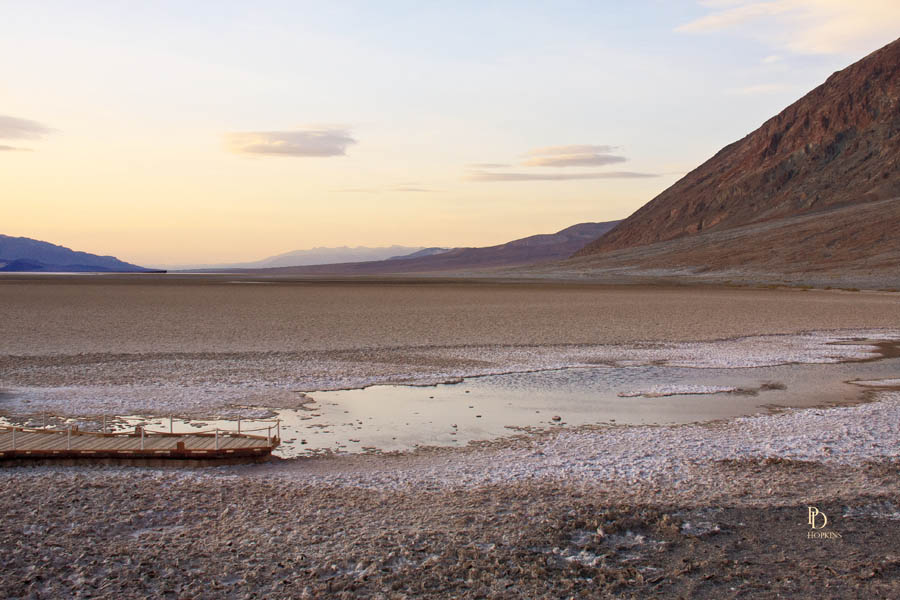
I’ll share some more pictures from Death Valley in an upcoming post that features colourful rock formations from the Artists’ Drive and Zabriskie Point areas.

